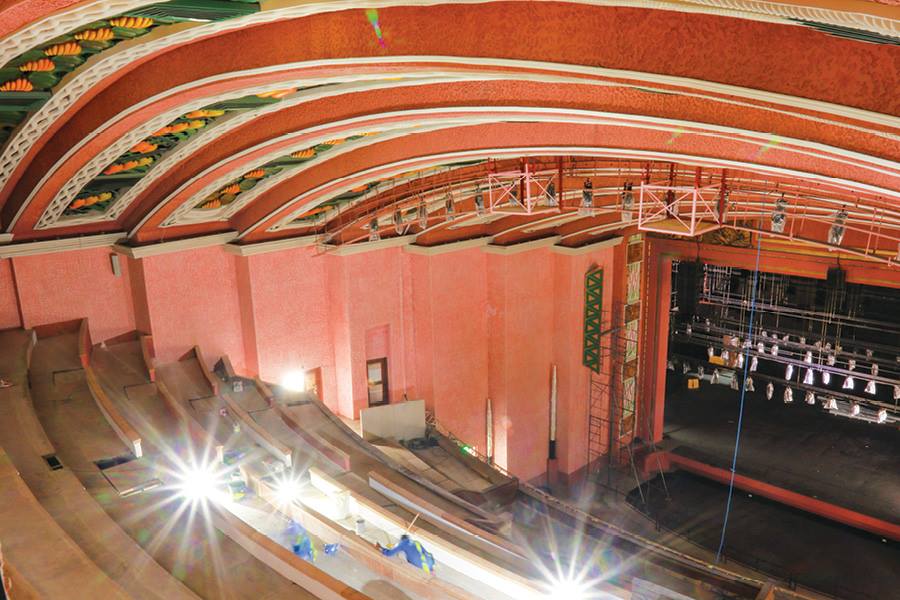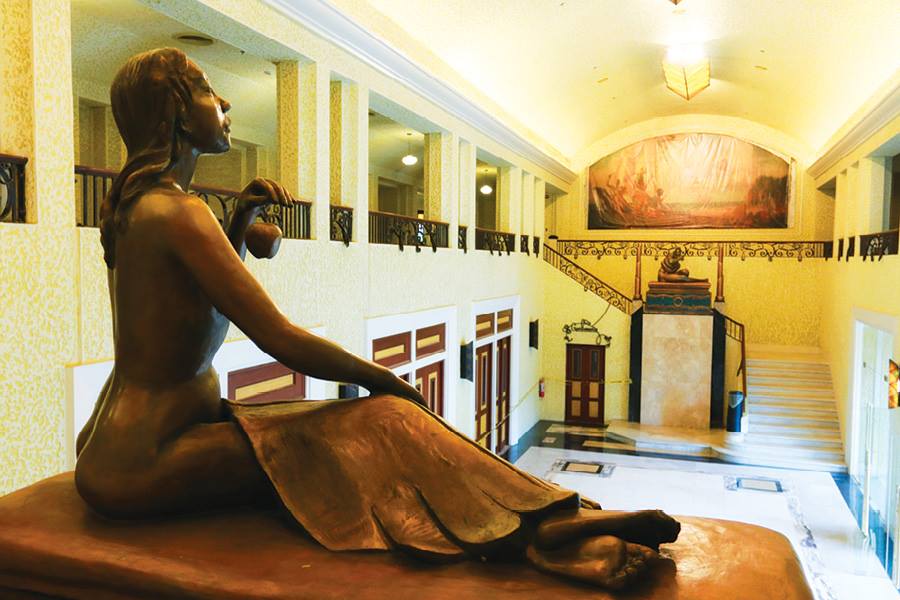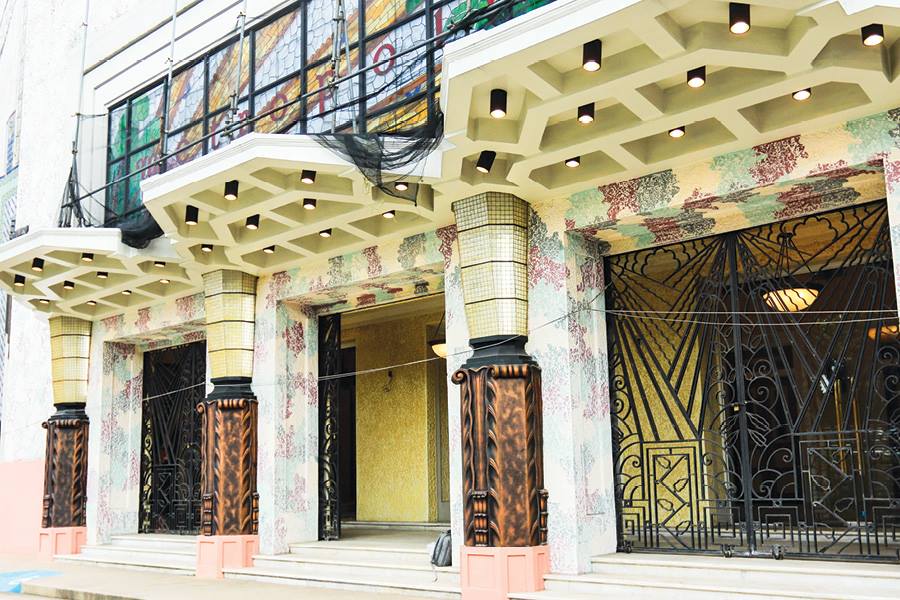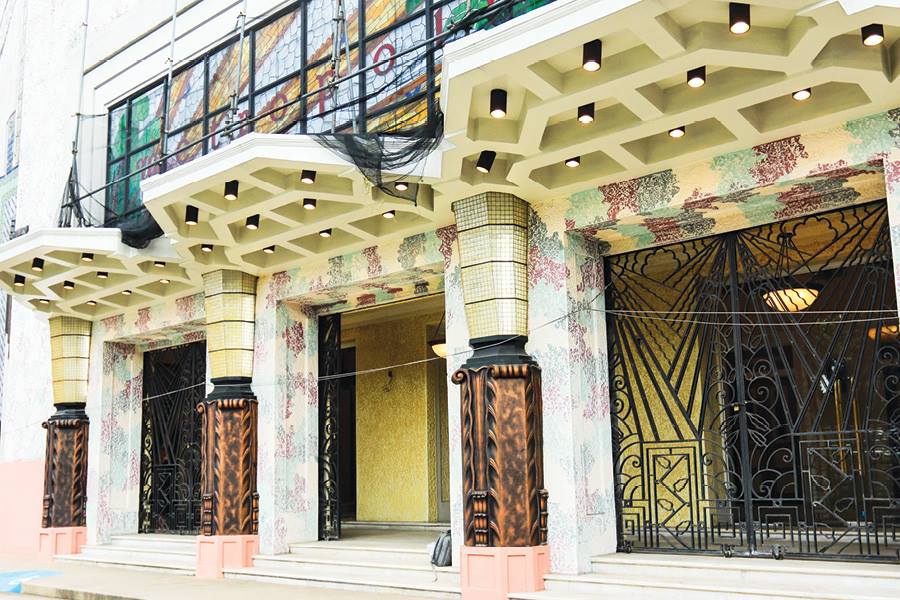After years of delays and mishaps, the Metropolitan Theater of Manila, dubbed during its heyday as the “Grand Dame of Manila,” is opening its doors again to the public.
By Bryle B. Suralta
Photos courtesy of NATIONAL COMMISSION ON CULTURE AND THE ARTS
There is a lost generation of Filipinos who have yet to experience the joy of sitting inside and watching a performance at the Metropolitan Theater of Manila. For the past 25 years, it has been silently sitting on Padre Burgos Ave. in Ermita, patiently waiting for its reopening. As one of the last surviving Art Deco structures in the Philippines, the Met was once home to lavish events and magnificent performances attended by the who’s who of yesteryears.
The National Commission for Culture and the Arts (NCCA), National Historical Commission of the Philippines (NHCP) and the local government of Manila seek to honor the past while bringing the Met into the future.
The conservation project to restore the landmark structure to its former glory is nearing its completion. This year, Filipinos and the rest of the world are finally going to see the Grand Dame of Manila come alive again.


Changing with the times
“If only the walls could talk,” says former consulting architect for the Met Gerard Lico, a multi-awarded author of publications on Philippine architecture and cultural studies, and a foremost art historian.
The Manila Metropolitan Theater is about to celebrate its 90th year. It was first inaugurated on Dec. 10, 1931. The structure was a departure from the previous designs of architect Juan M. Arellano, who designed some of the more classical structures in Manila in the 1920s, such as the Legislative Building (now the National Museum of Fine Arts) and the Manila Central Post Office. The Met’s design was a “Filipinized” version of the Art Deco movement of Paris.
“This building promoted a sense of nationalism in a colonial social milieu,” claims Lico. “It was an architecture of democracy because for a mere price of a ticket, people could easily enter a temple of drama and entertainment.”
Met, back in its heyday, was a popular venue for zarzuelas, operas and various stage performances. It was even where Mickey Mouse made his debut in the Philippines.
Like other buildings that were damaged during the war, the Met was also destroyed. Lico narrates: “After the war, there was a shift in entertainment forms. This saw a decline in theater. Thus Met’s functions changed—it became an ice cream parlor, boxing arena, hotel, basketball court, etc.”
During the Marcos regime, then Metro Manila Gov. Imelda Marcos, in true “Imeldific” fashion, reconstructed and rebranded the Met as “Teatro ng Mamamayang Filipino.” While the Cultural Center of the Philippines (CCP) was seen as a venue for the elite, the Met had a more diverse audience.
Film showings ultimately revitalized the theater. In Lico’s own words, “cinema was what immortalized the Met to the masses.” The finale of the hit Sharon Cuneta-starrer Bituing Walang Ningning was even shot at the theater. For a time, “Star for All Seasons” Vilma Santos and her posse of entertainers used it in the late 1980s as a venue to stage “Vilma!”, a top-rating live weekly variety show. The late German “Kuya Germs” Moreno even once suggested to Lico that the Met should be turned into a “museum of Philippine entertainment.”
The vision for the Met is rooted in the concept of cultural hubs, where artists could exchange ideas. It other words, it can be a tiangge of sorts for different art forms. The new Met, however, is envisioned to be a catalyst for the urban renaissance of Manila.
A decade of delays and dysfunction
The Met has been opened four times (1931, 1946, 1978 and 2010) and is currently awaiting its fifth inauguration this coming April.
Since closing in 1996, the Met restoration and rehabilitation project has changed hands often. In 2010, then President Gloria Macapagal-Arroyo, together with then Manila Mayor Alfredo Lim, attempted to revive the theater. Unfortunately, the project fell through and by the end of 2012, the Met rehabilitation project went nowhere.
The NCCA purchased the right of ownership of the Metropolitan Theater from the Government Service Insurance System back in 2015. This also marked concerned groups’ fourth attempt to restore the famed Art Deco structure. The conservation efforts began with a budget of more than P260 million.
While the move did provide some direction for the Met’s rehabilitation, it didn’t exactly put a halt to the instability behind the scenes. Issues surrounding regulatory measures also plagued the project.
Disputes regarding the alterations of the Met’s design have also contributed to the delays. An alleged pattern of hiring and not renewing project architects and engineers in the project management team have also stifled the continuity. Reshuffling within the organization hasn’t helped the conservation project either.
The NHCP eventually formed its own project management team. Led by Dr. Rene Escalante, in collaboration with various consultants, the organization started working on the project in 2019, Effectively taking over from the NCCA.

Reviving a landmark
“This is the people’s theater,” says NCCA chairman Arsenio “Nick” Lizaso. “The inauguration of the new Met is the culmination of a long and arduous journey. This has been made possible by the determined effort of a long line of individuals who share a common dream to bring back to life one of our nation’s cultural treasures.”
The structure also boasts a combination of Parisian and Filipino Art Deco, both inside and out. Sculptural pieces by Italian artist Franceso Monti and reproductions of Fernando Amorsolo’s artworks are featured in various spaces within the building, while tropical fruit ornaments decorate its ceiling. The National Museum of the Philippines, NHCP and the CCP were all consulted about the main theater’s design.
Improvements on lighting and sound will be incorporated soon. Award- winning lighting designer and former CCP deputy director of the Theater Operations Department Katsch Catoy will take charge. Meanwhile, for the stage sound, NHCP tapped FAMAS Awards “Hall of Famer” Mike Idioma. He is best known for films like Sukob and Bagong Buwan.
According to architect Becco Empleo, Phase 1 of the restoration project, which focused on the main theater complex, is almost complete. Meanwhile, the restoration of the two wings is currently under development. Phase 3, on the other hand, is yet to be determined, but is said to include enhancements to the developments done during the first two phases.
As of this writing, the NCCA has yet to unveil plans for the inaugural show to usher in Met’s planned reopening in April, the 500th anniversary of the victory of Lapu-Lapu in the Battle of Mactan in 1521. The commission is also working together with the local government of Manila led by Mayor Isko Moreno to celebrate the capital’s 450th anniversary at the Met this June.
(This story first appeared in the Feb-Mar 2021 issue of PeopleAsia)







